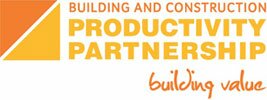|
KEY RESEARCH PROJECTS
Stage 1 of the Research Action Plan has focused on ten research projects. These are:
Systems Mapping Project
This project identifies critical intervention points in the life cycle of buildings, and across the building and construction sector as a whole, that can be used to make productivity gains. It includes understanding the complex behaviour of the sector and the key interactions and influences that affect productivity. Read more
Value Stream Mapping Project
This project identifies where waste occurs in the construction of residential buildings. It maps the steps in the construction process and quantifies the importance of each in providing value (functionality and market value) to the end-user. Steps that can be improved or eliminated are identified. This knowledge can be used to reduce the time taken to build houses, thereby reducing costs and improving productivity. Read more
Volume Builders Project
This project looks at the business models used by New Zealand companies that build a large number of homes – group or "volume builders" – and whether these achieve productivity gains. It helps identify which measures of productivity should be focused on to achieve positive change at a company level. Read more
Case Studies of Successful Projects
This research examines successful civil construction projects to identify common themes, processes and approaches that deliver productivity improvements. From these, the most common and universally applicable productivity drivers are identified. Future steps based on this knowledge are recommended. Read more
Macro Evidence Base
A big picture view of New Zealand construction sector labour productivity, unpicking macroeconomic data to help us understand why productivity here is so low, compared with Australia. This project addresses a critical research gap to help make sure that we are asking the right questions to identify key problem areas. Read more
Canterbury KPIs
The Canterbury rebuild provides the opportunity to pilot performance measures for the wider building and construction sector. This project examines key performance indicators (KPIs) for construction organisations in Christchurch. Read more
Construction Productivity in Canterbury
This study examines changes to components and processes for residential projects during the Canterbury rebuild and the effect of these changes on construction productivity. It considers whether they have wider application for the industry across New Zealand. Read more
Canterbury Procurement Project
The post-earthquake reconstruction programme presents a unique opportunity for clients and the supply chain to work more collaboratively, drive out waste and get better value from improved construction procurement. This project investigates the impact the Canterbury rebuild has had on procurement models, approaches and practices, and associated supply chain relationships. Read more
Canterbury Resourcing
This longitudinal study evaluates the response of the construction sector to a large-scale natural disaster. It looks at how construction firms involved in post-earthquake reconstruction in Canterbury manage resourcing requirements, exploring their business dynamics and the outcomes of different resourcing strategies. It is intended to follow participants over the recovery period from November 2011 until December 2014. Read more
Back to top
|










